The biggest news out of the NHL Trade Deadline day was the Ottawa Senators trading Mark Stone to the Vegas Golden Knights. Almost immediately, Stone agreed to an eight-year contract extension. The move makes the Golden Knights the winners of the deadline, as they are once again legitimate Stanley Cup contenders and have a superstar locked up through his prime at fair value.
But if we’re going to hand out an award for the best minor deal of the day, it should go to the Vancouver Canucks.
Gudbranson Swapped With Pens Forward Pearson
Somehow, some way, and just in the nick of time, Canucks general manager Jim Benning moved his worst defenceman, Erik Gudbranson to the Pittsburgh Penguins for a younger forward with a lower cap hit, 26-year-old Tanner Pearson. I didn’t expect Benning to pull this off, even though there were rumblings that teams — like the Florida Panthers — might be interested in acquiring Gudbranson. Kudos to him.
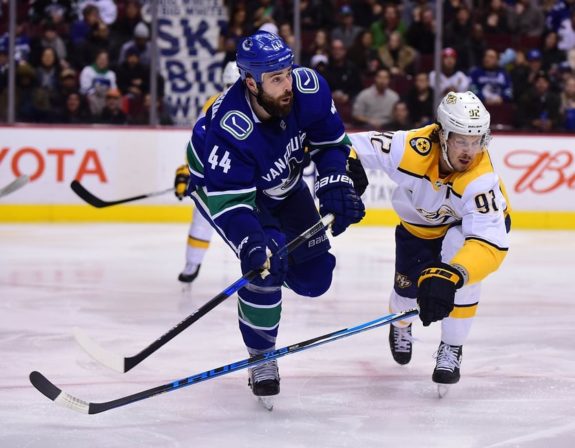
Additionally, the deal was 1-for-1 with no salary retained by either side. Can you believe it? For context, here’s some background info on their contract status.
| Player | Age | Position | Contract Status | Cap Hit |
| Erik Gudbranson | 27 | Right Defence | Two More Years (UFA 2021) | $4 million |
| Tanner Pearson | 26 | Left Wing | Two More Years (UFA 2021) | $3.75 million |
To be clear, this is not a win for the Canucks because they got a gem in Pearson. Far from it. Pearson, a former first-round pick, recorded just one assist in 17 games with the Los Angeles Kings to start the 2018-19 season before he was traded to the Penguins for speedy winger Carl Hagelin.
Remember, the Kings were atrocious at the beginning of the season, recording five wins in their first 17 games and scoring a total of 34 goals in that span, eight less than any other NHL team. In 44 games with the Pens following the trade, Pearson scored nine goals and added five assists for 14 points, which is a not-too-shabby 17-goal pace.
But even if the Canucks had received a minor-league player in exchange for Gudbranson, it would have been huge. When you remove a slow blueliner with terrible on-ice results from your lineup, let alone one with money and term still left on his deal and don’t have to retain any salary, it’s a win.
Related: Gudbranson, Pearson, Del Zotto & More Traded
How Bad Is Gudbranson?
This season, Gudbranson is a minus-27. His minus-48 rating since 2016-17 is the seventh worst among NHL defencemen. His five-on-five goal share this season is a league-worst 34.44 per cent (31 goals for, 59 against with him on the ice). His five-on-five shot attempt share since 2016-17 is the fourth worst in the NHL, at 44.56 per cent. His five-on-five scoring chance percentage is dead last since 2016-17, at 41.4 per cent.
Erik Gudbranson (to Penguins, ahahaha) is a terrible, truly, truly terrible defender. Just, like, so bad. pic.twitter.com/iy0AIesLxc
— Micah Blake McCurdy (@IneffectiveMath) February 25, 2019
If his bad defensive results were somewhat mitigated by strong offensive play, I wouldn’t criticize him so much, but 19 points in 139 games with the Canucks is all the 6-foot-5 defender has done since being acquired in 2016. Those numbers aren’t the only part of his game that leave much to be desired.
As Canucks Army contributor Darryl Keeping points out, Gudbranson’s transition game is downright awful. He noted that Gudbranson had the Canucks’ lowest individual controlled exit rate and their highest turnover and icing rates per 60 minutes. Icing the puck and giving it away constantly is not a recipe for success. Trading him is addition by subtraction.
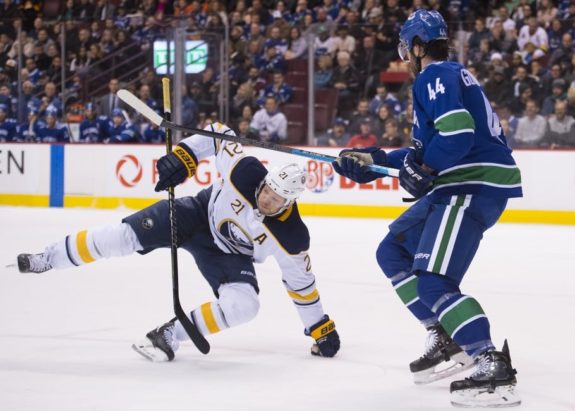
For those who say, “Well, he battles hard and gets that puck back and blocks shots!”, according to Natural Stat Trick, since 2016-17 he is last on the Canucks in takeaways per 60 minutes at five-on-five (0.35) and third-last (of 10) in blocked shots per 60 (3.79).
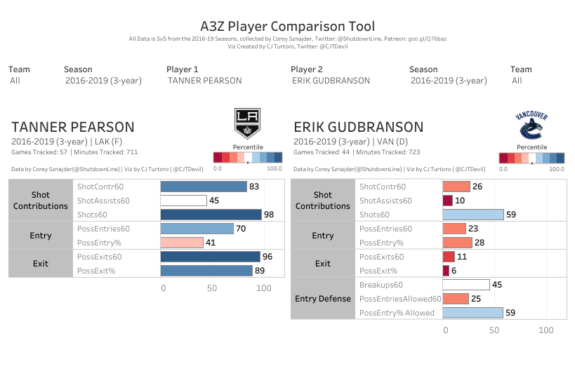
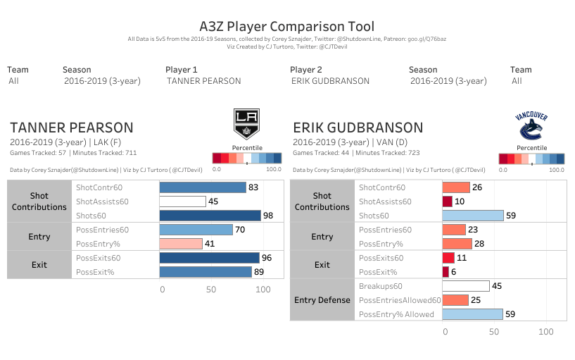
Above is a chart compiled by CJ Turtoro based on data tracked by Corey Sznajder that shows zone exit and entry rates measured in percentiles against the league average. Gudbranson is somewhat average in breaking up plays when attackers enter the Canucks zone, but he is in the sixth percentile for possession exit percentage and the 11th percentile for possession exits per 60 minutes.
Surprisingly, the chart shows Pearson is very good at exiting the zone. Yes, it is certainly easier for a winger, but being in the 96th percentile for possession exits per 60 and the 89th percentile for possession exit percentage since 2016 is nothing to scoff at.
Pearson Adds a Slight Scoring Touch
As mentioned, don’t expect Pearson to light it up. That being said, he does have a 24-goal season under his belt from 2016-17 and he scored 15 goals last year while hitting the 40-point mark for the second straight season. He’s an upgrade on the revolving door of wingers Bo Horvat has had to deal with this season.
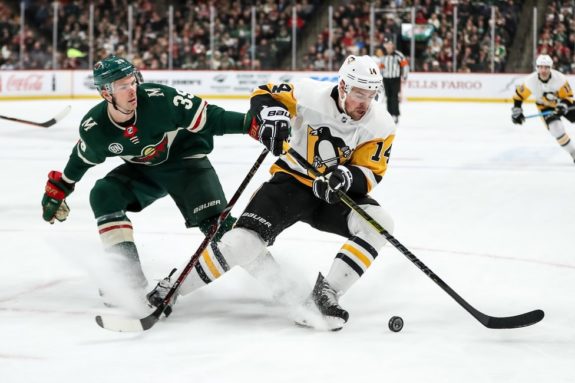
Pearson had the second-best shot share on the Kings from 2016-18, with a 54.21 Corsi For percentage, and his 28.5 scoring chances for per 60 minutes was also second best on the team in that span. If put in a position to succeed, such as playing alongside Horvat or Pettersson for most of the season, the former first-round pick could net 20 goals in 2019-20.
Related: Canucks Need to Be Careful With Edler Extension
Canucks Blue Line the Real Winners
Canucks fans probably noticed that Gudbranson was an anchor for whoever he played with. For that reason, guys like Ben Hutton, Derrick Pouliot, and (briefly) Chris Tanev can be relieved. Hutton especially, considering the two played nearly 600 minutes at five-on-five together this season. Since Alex Edler went down in February with an injury, Hutton has blossomed playing alongside Troy Stetcher.
| Since 2017-18 | Minutes | CF% | SCF% | GF% |
| Hutton with Gudbranson | 783:25 | 42.91 | 39.47 | 32.84 |
| Hutton without Gudbranson | 794:19 | 51.78 | 52.33 | 56.45 |
| Pouliot with Gudbranson | 251:04 | 46.75 | 40.17 | 50 |
| Pouliot without Gudbranson | 1216:43 | 52.07 | 49.82 | 51.09 |
All in all, while the Canucks got a decent top-nine, 26-year-old winger in Pearson, the return wasn’t the reason they won this trade so handily. It’s because they got rid of an anchor on their blue line without taking a bad contract back or retaining any salary. For that, Benning should be applauded. Now, let’s see how he fares with the Edler extension.

